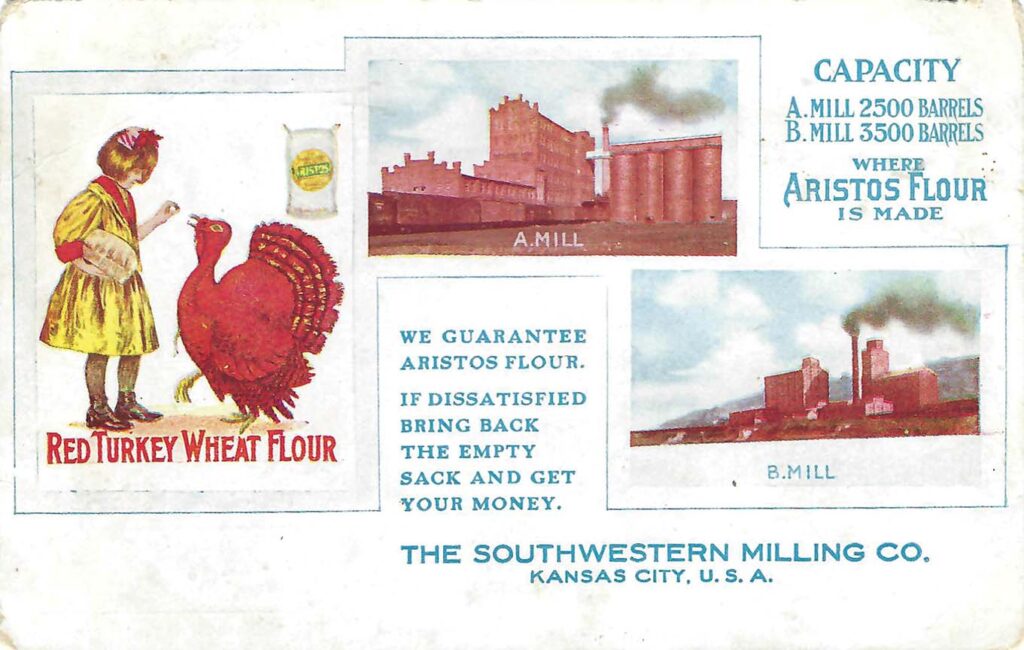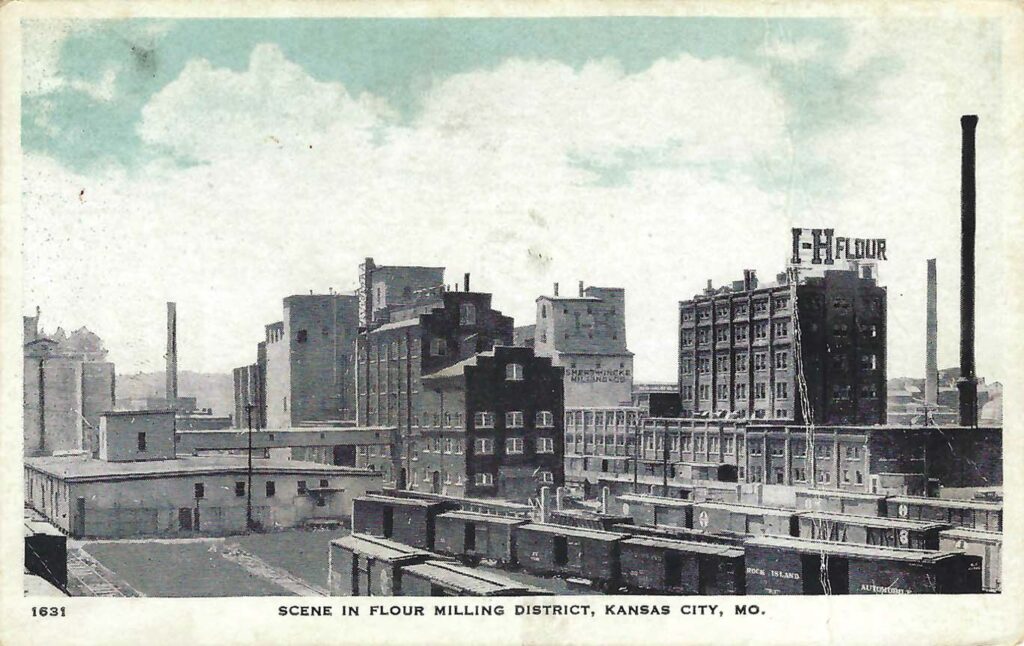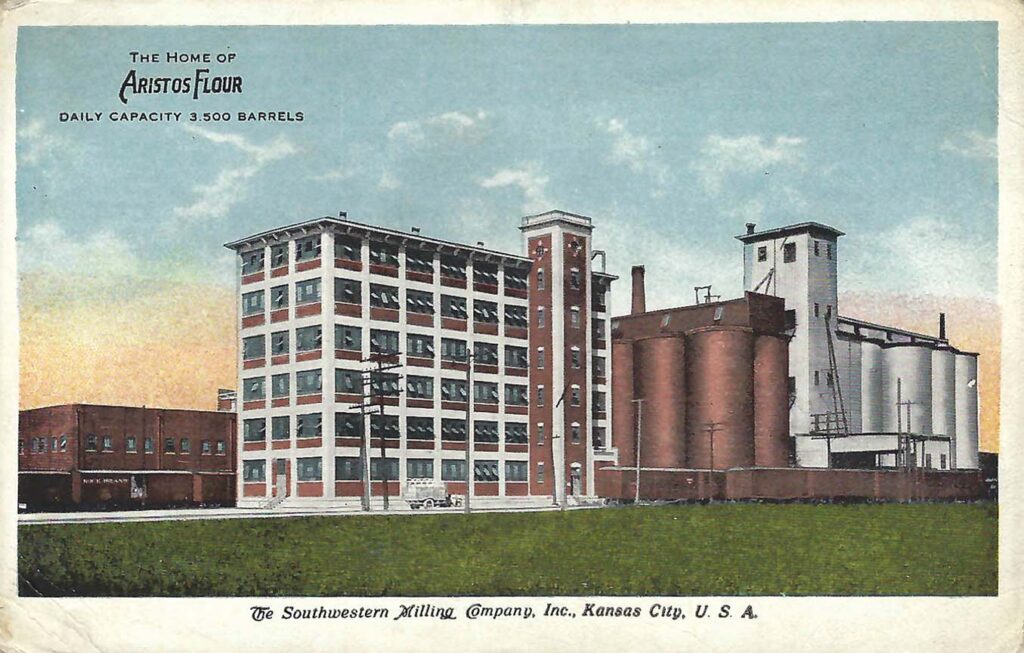
Michael Bushnell
Publisher
This week, we feature a promotional postcard for the Southwest Milling Company showing the company’s A and B Flour Mills. The “A” mill was built in 1913 near present day 18th Street and Kansas Avenue on the banks of the Kansas River. Advertised as fireproof and of the most modern construction, the plant was Southwestern Milling’s flagship plant along the Kaw River for many years.
At its peak, the mill’s output was roughly 4,000 barrels of flour a day. The company’s “B” mill, according to City Directories in the Missouri Valley Room of the Kansas City Library, was located near 25th Street and State Line Road, boasting an output of 3,500 barrels daily.
The banks of the Kansas River near its confluence with the Missouri had already begun to turn from a pristine woodland to heavy industry around the turn of the 20th century. By 1911, more than 17 flour mills were located along its banks in Armourdale, Argentine and Kansas City, Kan., all of which were separate incorporated entities at the time. Those mills, collectively, by 1919 could process and store more than 3.6 million bushels of wheat per year.

According to a 1920 article in “The Kansas Citian,” the newsletter for the Chamber of Commerce of Kansas City, the flour mills along the Kansas River became well known as the city’s Flour Milling District. Those mills, combined with the mills in the East Bottoms, propelled Kansas City to become the third largest milling center in the United States by 1920.
The article lists 11 mills with familiar names such as Zenith Milling, Bulte Flour Mills, Kimball Milling, Ismert-Hincke Milling and Seaboard Blending and Milling Company and John Kelley Flour Mills in the East Bottoms, all combining to mill close to 21,000 barrels of flour per day, according to the article.
Southwestern Milling advertised that no hand touched their wheat during the milling process in order to maintain the most sanitary conditions for food production. By 1928, the “A” mill had almost doubled in size. In 1928, Southwestern Milling was acquired by Standard Milling, making it the largest processor of Turkey Red Winter wheat in the world. Turkey Red was a hardy strain of winter wheat brought to central Kansas by Russian Mennonites in the 1880s.
Due to their location on the banks of the Kansas River, most every flour mill in Argentine and Armourdale sustained serious damage during the flood of 1951. While some mills and meat processing plants reopened after the swirling, muddy waters receded, Standard’s “A” mill ceased operation citing the extreme expense of rebuilding. All of its machinery was dismantled and either sold or sent to other mill locations in the Midwest.

The “A” mill stood vacant for more than 30 years, and most of the grain elevators shown in this postcard were razed in order to make way for the new 18th Street Expressway.
The plant reopened in 2004 and operated under the Corbion Caravan Ingredients brand, a manufacturer of baking additives. In 2014 the Netherlands-based conglomerate announced that the mill would be shuttered in a business streamlining move. The site remains idle today.
1920 Kansas Citian is courtesy of the Kansas City Public Library, Missouri Valley Special Collections.
www.kchistory.org
















